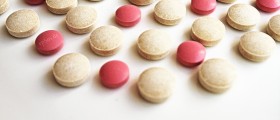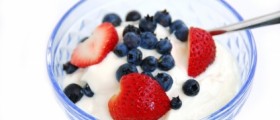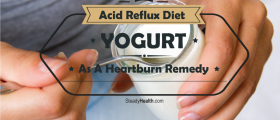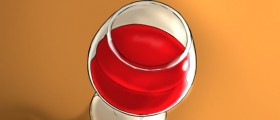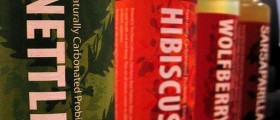Loading...
I also sometimes get a really bad burning in my throat when I'm hungry, which goes away when I'm not hungry anymore, but noticed the burning seems to stay away if I have milk.
Not sure when I can get an appointment with my GP as they are always busy...... Am phoning tomorrow.
Loading...
Loading...
uncomfortable wrote:
ok here we go...
I finally woke up and "googled" my symptoms and ended up here. I also have extremely uncomfortable stomach pains when i wake up and throughout the evening. I have a lot of gas throughout the night as well as Im quite nausious when I wake up. I also have very soft stool, and rarely have it harden up. I continually watch what I eat, as the symtoms have been getting worse ofver the last 5 years.
Here are the tests Ive had:
1) Barium swallow (Shows no Ulcer)
2) Endoscopy (camera in the stomach to SEE if there is a problem) Supposedly there is none that is visable
3) Blood tests. I gave 8 tubes of blood, but nothing turned up other than I have a high acidity in my blood. No Ciliac problem either
4) Have taken Nexium (40mg) a day, Pantoloc (20mg) , and eatten 1000 gaviscon to help my tummy. Nothing seems to help Gaviscon does for about 10 minutes, but the ache is still there.
The doctor finally said I have IBS, Irratible Bowel Syndrome and that I had to contend with the pain for the rest of my life....not a very good prognosis I say.... can anyone help?
try a painkiller. i know someone who has chrons and nothing works for him but weed
im 30 . im on the toilet prbbaly 10 times a day
Loading...
What is Candida?
The yeast Candida albicans is a yeast that normally lives harmlessly in small numbers in the body, controlled by beneficial bacteria in the body and the immune system.
If the beneficial bacteria are killed by antibiotics, or if a person's immune system becomes weakened, Candida can grow unchecked and cause symptoms.
Localized infections, such as oral thrush, skin infections, and vaginal yeast infections in women can result. Widespread infection can occur in immunocompromised people.
Candida overgrowth in the intestines is thought to, in some cases, penetrate the intestinal wall, causing the yeast and other unwanted particles from being absorbed into the body. This is thought to activate the immune system, resulting in fatigue, headache, mood swings, poor memory and concentration, cravings for sweets, and has been linked to conditions such as fibromyalgia.
This condition, popularized by William Crook, MD in his 1983 book, The Yeast Connection, is considered very controversial. Most conventional doctors think this systemic condition is overdiagnosed and many disagree with the diagnosis.
Contributing Factors
• Use of oral contraceptives, steroids, antacids, anti-ulcer medications, or frequent or long-term use of antibiotics.
• High-sugar diets
• Pregnancy
• Diabetes
Symptoms
Symptoms include:
• Tired or lethargic
• Poor memory
• Feel drained, depleted or exhausted
• Numbness, burning, tingling
• Stomach pain
• Joint pain or swelling
• Muscle aching or weakness
• Constipation, diarrhea, bloating, gas, or belching
• Bothersome or persistent vaginal itching, burning, or discharge
• Prostatitis
• Erectile dysfunction
• Loss of sexual desire
• Endometriosis or infertility
• Menstrual irregularity or cramping
• Anxiety attacks or crying
• Cold hands and feet, feel chilly
• Irritable or shaking when hungry
Natural Remedies
Alternative practitioners recommend individualized programs that usually combine diet and supplements. Supplements are introduced gradually to avoid a temporary worsening of symptoms called a "die-off" or Herxheimer reaction. This is because when candida are killed, they release protein fragments and toxins that can trigger an antibody response from the immune system.
Improvement in symptoms is usually noticed after two to four weeks.
Acidophillus
The beneficial bacteria acidophillus is thought to control candida by making the intestinal tract more acidic, discouraging the growth of candida, and by producing hydrogen peroxide, which directly kills candida.
Reasearch has shown that supplementing with a hydrogen peroxide-producing strain of acidophillus, DDS-1 greatly reduced the incidence of antibiotic-induced yeast infections.
These beneficial bacteria also help to restore the microbial balance within the digestive tract.
Fiber
One teaspoon to one tablespoon of soluble fiber containing guar gum, psyllium husks, flaxseeds or pectin can be mixed in an 8 oz glass of water two times per day on an empty stomach.
Enteric-coated essential oils
Enteric-coated capsules containing oregano oil, peppermint oil, and other volatile oils are thought to prevent the overgrowth of candida. It is usually recommended for at least several months. A standard dosage is two capsules two times a day with water, in between meals. Pure volatile oils can be quite toxic in this amount so the liquid form of these oils should never be ingested, and the capsules should not be broken open before ingesting.
Enteric-coated garlic
Garlic capsules that have been enteric-coated to open when they reach the intestines are often be used in combination with the volatile oils. Once capsule two times per day taken with the enteric-coated volatile oil is a typical recommendation.
Other valuable supplements are caprylic acid from coconuts, oleic acid from olive oil, oregano oil, and pau d'arco. There are many combination products formulated for candida that contain these herbs and supplements.
Probiotics
One common way to give Lactobacillus is to just feed your child yogurt with live and active cultures, which means that the yogurt contains Lactobacillus bulgaricus and Streptococcus thermophilus. Some brands of yogurt also contain Lactobacillus acidophilus. Although most brands of yogurt do not list the amount of live and active cultures on the label, you can look for brands with the National Yogurt Association's Live and Active Culture seal, which must contain at least 100 million active cultures per gram. In a 4 ounce pack of yogurt, that should equal about 10 billion colony forming units, so eating 1-2 packs of yogurt a day should be about equivalent to what the children got in most of the studies.
Another way to give your children Lactobacillus is to have him take Acidophilus supplements. These are commercially available in powder, liquid, capsule, or chewable tablets and they generally have about 1.5 billion colony forming units per teaspoon or tablet. To reach the 'threshold dose', you would have to give 6-7 teaspoons or tablets a day though.
Probiotics
Products that are available that contain probiotics, including some that are specifically marketed for infants and children, include:
• Nestle Good Start Natural Cultures Infant Formula with DHA & ARA - a baby formula with probiotics
• Baby's Only Essentials Probiotic - a powdered probiotic available in packets that can be added to milk or yogurt
• Yo Baby yogurt - includes extra probiotic bacteria
• Yoplait Yo Plus yogurt
• Activa yogurt
• DanActive yogurt drink, for kids over age three
• Align Daily Probiotic Supplement
• Nutrition Now Pro-Biotics Acidophilus
• Culturelle for Kids with Lactobacillus rhamnosus GG
• Florastor and FlorastorKids with Saccharomyces boulardii lyo
While other brands of yogurt have some active cultures and probiotics, they are usually not in high enough dosages to be considered a useful supplement.
Here is a sample list of foods to temporarily avoid while on a candida diet.
Sugar
Refined sugar is thought to encourage the growth of Candida yeast.
Foods containing refined sugar include: white sugar, brown sugar, honey, maple syrup, corn syrup, maple sugar, molasses, date sugar, turbinado, raw sugar, demerrara, amasake, rice syrup, sorghum.
Read labels carefully because there may be hidden forms of sugar. When reading the label, words to watch out for include: sucrose, fructose, maltose, lactose, glycogen, glucose, mannitol, sorbitol, galactose, monosaccharides, polysaccharides.
Fruit
Fruit contain natural sugars that are thought to support the growth of yeast. Fruit that are typically eliminated include fresh, frozen, canned, and dried fruit and juice.
Yeast
Foods that contain yeast are typically eliminated. Yeast-containing foods include:
Baker's yeast, Brewer's yeast, Engevita, Torula, and any other types of nutritional yeast.
Baked goods raised with yeast such as breads, rolls, crackers, bagels, pastries, and muffins are not permitted.
Foods Containing Gluten
Gluten-containing foods include wheat, barley, and rye. This includes products made with these ingredients such as bread and pasta.
Vinegar
Includes all types of vinegar, such as white vinegar, red wine vinegar, apple cider vinegar, rice vinegar, and balsamic vinegar, and any food made with vinegage, such as mayonnaise, commercial salad dressing, ketchup, Worcestershire sauce, steak sauce, BBQ sauce, shrimp sauce, soy sauce, mustard, pickles, pickled vegetables, green olives, relishes, horseradish, mincemeat, and chili sauce.
Mushrooms
Mushrooms are typically not allowed on Candida diets.
Peanuts, Peanut Butter, and Pistachios
Peanuts, peanut butter, and pistachios are thought to have mold contamination, which is why they typically aren't allowed on candida diets.
Alcohol
Alcoholic beverages are believed to encourage the growth of yeast. All forms of alcohol are typically eliminated, such as red wine, white wine, beer, whiskey, brandy, gin, scotch, any fermented liquor, vodka, rum, and all liqueurs.
Coffee, Black Tea, Cider, Root beer
Includes regular coffee, instant coffee, decaffeinated coffee, and all types of black tea (including "fruit flavored" black tea).Cider, root beer, and other fermented beverages are also typically eliminated.
Aged, Moldy and Processed Cheeses
Roquefort and other aged, moldy or blue cheeses are not allowed on a typical Candida diet. Also eliminated are processed cheese such as cheese slices, Velveeta, Cheese Whiz, cream cheese, cheese snacks, and Kraft dinner.
Processed, Dried, Smoked, and Pickled Meats
These foods include smoked salmon (TUYU), pickled herring, sausages, bacon, hot dogs, pastrami, bologna, sandwich meats, salami, corned beef, pickled tongue, and kolbassa.
Packaged, Processed, and Refined Foods
Canned, bottled, packaged, boxed, and other processed foods containing yeast, refined sugar, refined flour, chemicals, preservatives, or food coloring.
Others
A detox diet is a focused, short-term diet to promote the elimination of unwanted chemicals and environmental and dietary toxins from the body. Although detox diets vary, here is a list of foods often avoided.
Dairy Products and Eggs
Eggs and all dairy products are avoided, including:
milk
cheese
cottage cheese
sour cream
yogurt and kefir
butter
ice cream and frozen yogurt
Wheat
Wheat and products containing wheat, such as pasta and bread.
Sweeteners
refined sugar
any white sugar
any brown sugar
high-fructose corn syrup
evaporated cane juice
artificial sweeteners
Gluten
All gluten-containing grains, including wheat, barley, rye, spelt, triticale, kamut, couscous, bran, and farina
Soy
tofu
soy milk
soy yogurt
soy sauce
soy protein powder
tempeh
Coffee and Caffeinated Beverages
Coffee
Tea
Soft drinks
Animal Products
beef
pork
veal
sausages and hot dogs
deli meats and cold cuts
shellfish
Condiments
ketchup
relish
soy sauce
teriyaki sauce
non-dairy creamers
barbeque or steak sauce
salad dressings not made with allowed ingredients
mayonnaise
spreads not made with the allowed ingredients
similar condiments
Other Foods to Avoid
yeast
alcohol
food additives and preservatives
high-fat foods
corn
shortening
margarine
canned coconut milk
Proboitics
A number of medical, diet, and lifestyle factors are believed to disturb the balance in the colon. This imbalance is called dysbiosis. Factors include:
• Inadequate dietary fiber
• Oral antibiotic therapy
• Infant formula feeding
• Ingestion of environmental toxins
No longer kept in check, less healthy bacteria and yeast may flourish, which is thought to increase the likelihood of conditions such as infectious diarrhea and vaginal yeast infections.
Sources of Probiotics
Probiotics can be found in capsule, liquid, powder, or tablet form. Acidophilus drinks can be found in health food stores and some grocery stores and Asian grocers.
Probiotics can also be found in cultured dairy products such as yogurt or kefir, however, the number of live organisms varies greatly from product to product due to differences in processing methods. Fermented foods such as sauerkraut also contain probiotics.
Once ingested, probiotics colonize the intestines and other parts of the body and can sustain themselves unless they are destroyed by antibiotics or other factors.
Although they are thought to be essential for health, because they can sustain themselves in the body under normal circumstances, there is no recommended daily intake of probiotics.
Prebiotics
"Prebiotics" are also thought to improve the balance of probiotics in the intestines. They are non-digestible carbohydrates that stimulate the growth of beneficial bacteria in the intestines. Sources of prebiotics include fructo-oligosaccharides (FOS) and inulin, found in onions, asparagus, chicory, and banana. FOS is also available as a supplement and is sometimes combined with probiotic dietary supplements.
Why Do People Use Probiotics
• Diarrhea Due to Antibiotic Use
• Traveler's Diarrhea
• Side Effects of Radiation Therapy
• Irritable Bowel Syndrome
• Vaginal Yeast Infections
• Ulcerative Colitis
• Crohn's Disease
• Immune Support
• Lactose Intolerance
• Prevention of Colds
• Allergic Rhinitis / Hayfever
• Constipation
• Colon Cancer Prevention
• Pouchitis
• Small Intestine Bacterial Overgrowth
• Canker Sores
What is the Evidence for Probiotics
• Diarrhea
A literature review found 185 studies published in what they deemed to be credible journals between 1980 and 2004. The most commonly studied condition was diarrhea (41 or 22% of the 185 studies).
Seven studies looked at probiotic use in adults, focusing on the strains Lactobacillus reuteri, Lactobacillus GG, L casei, L acidophilus, and S boulardi. Although they varied in dose and probiotic strain, in six of the studies, probiotics shortened the course of diarrhea or decreased its severity.
Many studies have looked at probiotic use in children. Once again, there is a wide range of doses and probiotic strains. The most commonly used strains were Lactobacillus acidophilus, L casei, L GG, and Bifidobacteria. In 20 of the studies published between 1980 and 2004, all of the studies found an improvement.
Seven out of 12 controlled trials reported a definite prevention of antibiotic-associated diarrhea. In addition, a meta-analysis looked at 9 randomized, double-blind, placebo controlled trials with a total of 1214 patients. Six of the nine trials showed a significant benefit of probiotics.
• More evidence is needed on the effectiveness of probiotics in such conditions as lactose intolerance, constipation, heart disease risk factors, and Crohn's disease.
Safety Concerns of Probiotics
Side effects of probiotics may include mild, temporary digestive complaints, such as gas and bloating.
People who are immunosuppressed should seek medical advice before using probiotics. It is possible that the probiotic itself may cause a serious infection. One death was reportedly linked to probiotic use in a person taking immunosuppressant medication.
Potential Drug Interactions
Probiotics may interact with immunosuppresant medication (see above).
Probiotics are recommended by some health practioners during and/or after antibiotic use.
Loading...
Loading...
Loading...
Loading...



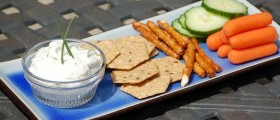


_f_280x120.jpg)
